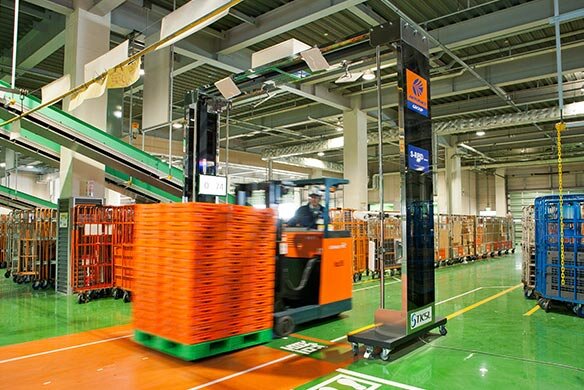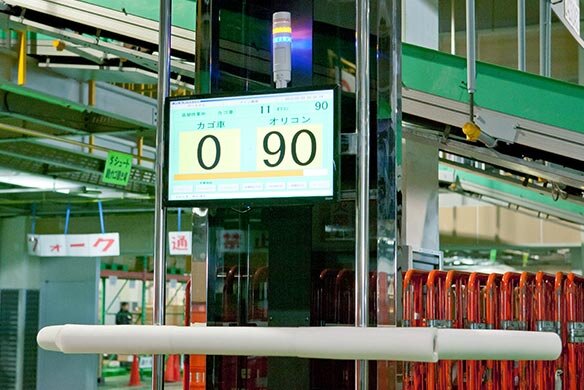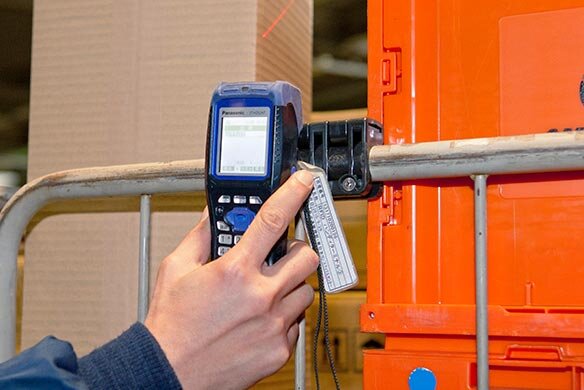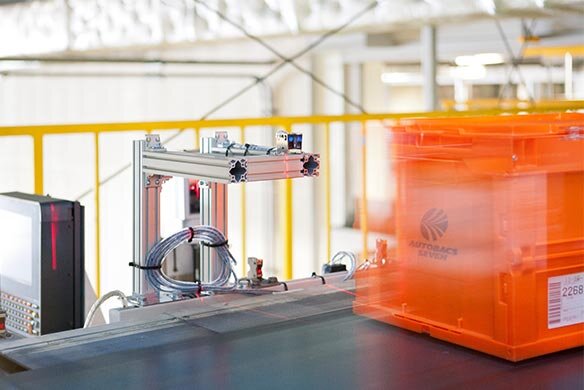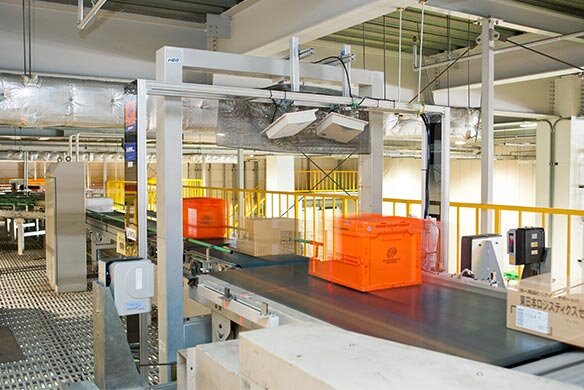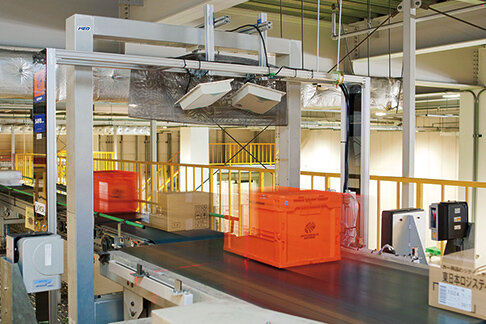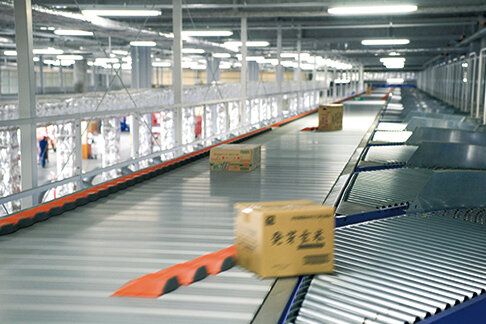Retail/Wholesale
AUTOBACS SEVEN Co., Ltd. (Introduction of RFID system)
Mr. Hiroyuki Otomatsu (General Manager, Distribution Management Department)
Challenges
- Reduce management costs and improve asset management of collapsible totes and delivery carts.
- Prevention of loss of collapsible totes.
- Eliminate accumulation of collapsibles at stores.
Results
- Reduced overhead costs because data entry was no longer necessary.
- RFID gave better insight to the location of collapsible totes so we could prevent loss.
- Gained visibility into the reasons why and where collapsibles and carts ended up accumulating at stores.

BackgroundWith nationwide delivery, it was essential that we resolve the issue of managing the collapsible totes.
Background
With nationwide delivery, it was essential that we resolve the issue of managing the collapsible totes.
With the exception of 200 stores in the vicinity of the East/West center, shipments were in cardboard boxes. To reduce cost and environmental burden, we decided to transition to the use of collapsible totes beginning in 2000 and build a nationwide delivery system over the next 10 years. Collapsible containers are reusable, environmentally friendly and can reduce costs but we had trouble managing those assets. They would accumulate in stores, not be returned properly and get lost. Counting the collapsible totes and delivery carts and inputting them by hand to the PC was a laborious task.
To resolve this problem, we evaluated the use of RFID tags on the collapsible totes and delivery carts.
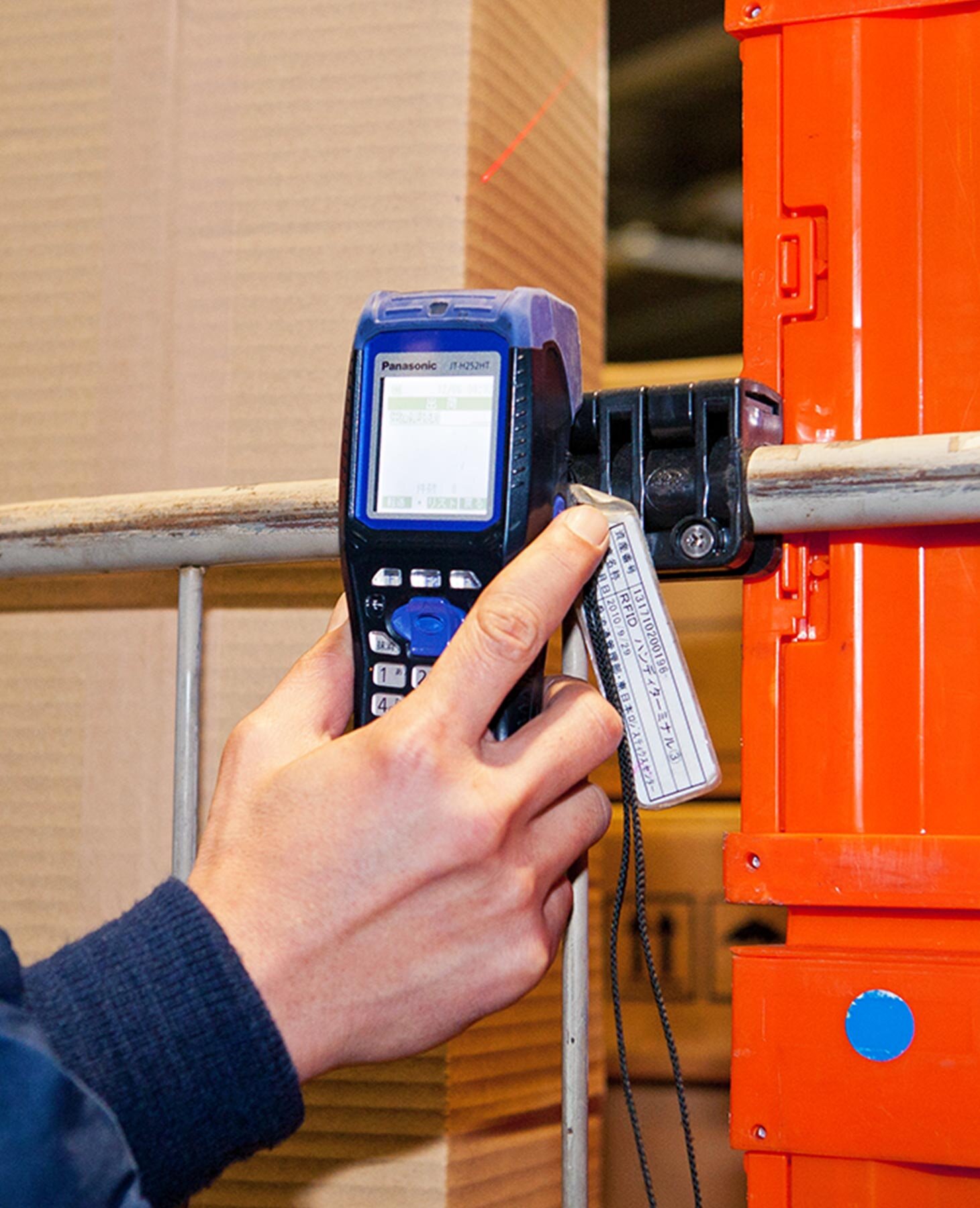
Reasons We Chose Toyo Kanetsu Solutions:Toyo Kanetsu has had many outstanding achievements in the industry, especially with RFID applications.
Reasons We Chose Toyo Kanetsu Solutions:
Toyo Kanetsu has had many outstanding achievements in the industry, especially with RFID applications.
Since we wanted to control the collapsible totes using RFID, we needed an integrator who had this specialized knowledge. Toyo Kanetsu has a strong track record in this area and was able to show us a sample operation at their Tech Center. In order to be able to verify where, what type of tag and how to attach it to the collapsible totes and delivery carts, we tried several types on several places to determine how easily it would be to automatically read the data. Toyo Kanetsu’s experience was very helpful in this area and they gave us confidence to move ahead.
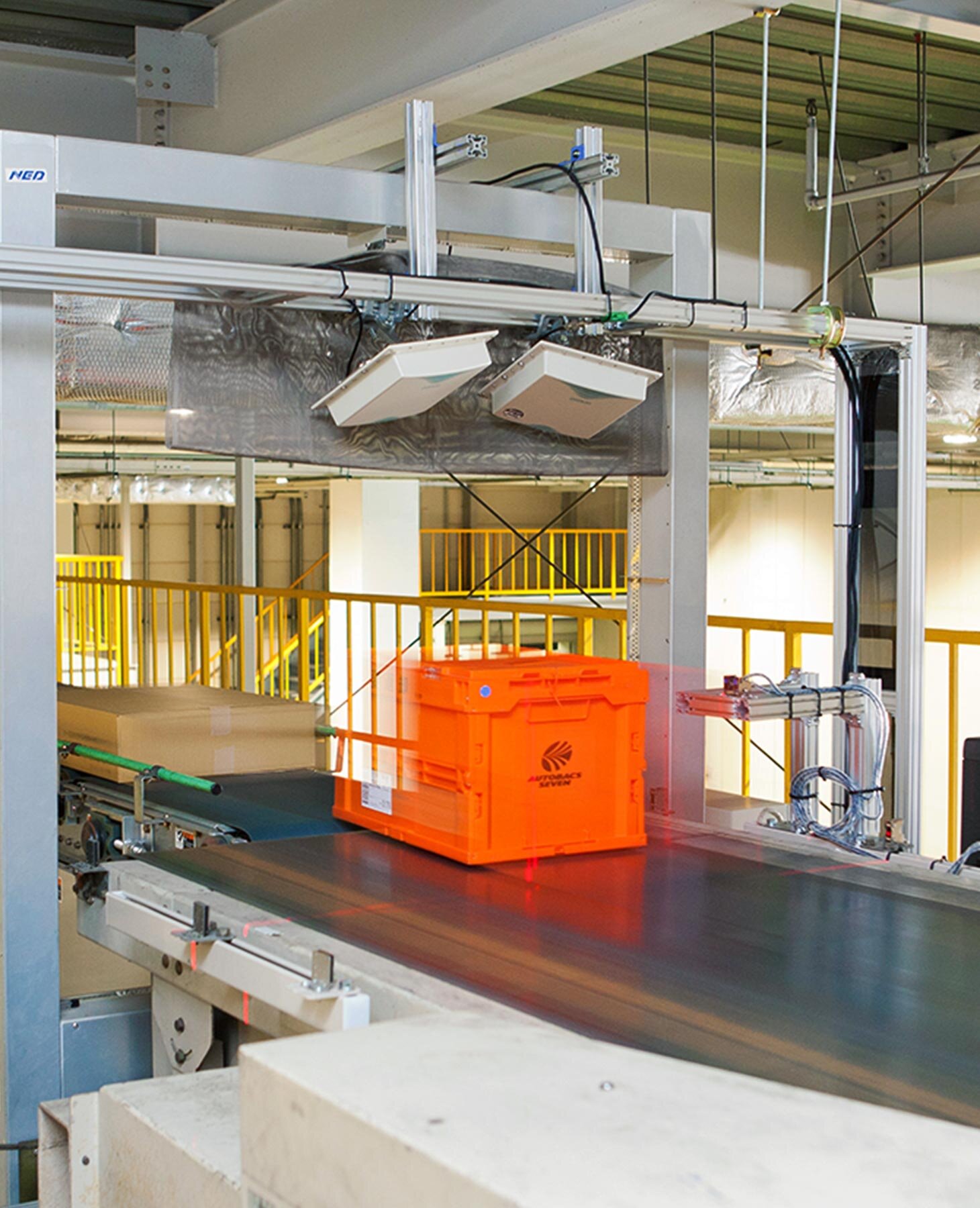
BenefitWe have a clear picture of where the collapsible totes are.
Benefit
We have a clear picture of where the collapsible totes are.
We first put RFID tags on the delivery carts and upon seeing how smoothly that worked, we decided to do the same thing with the collapsible totes. After the verification process at the test facility, we installed the antenna in the East Japan center and conducted some reading tests. We were able to solve the problem of misreading RFID tags at the gates and unnecessary reading of tags by using EasyTap, which picks up only the tags of goods moving in/out of the shipping gate. Collapsible totes must also be washed periodically and, along with Toyo Kanetsu Solutions, we performed cleaning/waterproof test of the RFID tags on the collapsible totes. Despite our preparedness and testing prior to implementation, we still had issues. We ship product in 4,000 to 5,000 collapsible containers per day from this center. Large car parts cannot be placed in collapsibles so we still have to use cardboard. The ratio is about 50% collapsibles and 50% cardboard. With RFID, the read range is pretty wide and sometimes on a high speed sorter, the RFID data on a collapsible tote was sometimes mistaken for a cardboard box that followed it. To reduce this error, Toyo Kanetsu suggested the use of a color sensor. We implemented a color sensor for the orange Autobacs corporate color which is the color of the collapsible totes and resolved the issue.
With the introduction of the RFID system, we know where the collapsible containers are, we have reduced loss, and we can find where they accumulate at the stores. Furthermore, there is no manual input of data on returned collapsible totes and delivery cart.
Based on these improvements, we believe that the process will be much more efficient and that our labor costs will be reduced from 10 million yen to 4 million yen annually. With better control of these assets, we can also manage the number of times the totes are reused and how they cleaned, as well as manage repairs to the delivery carts.
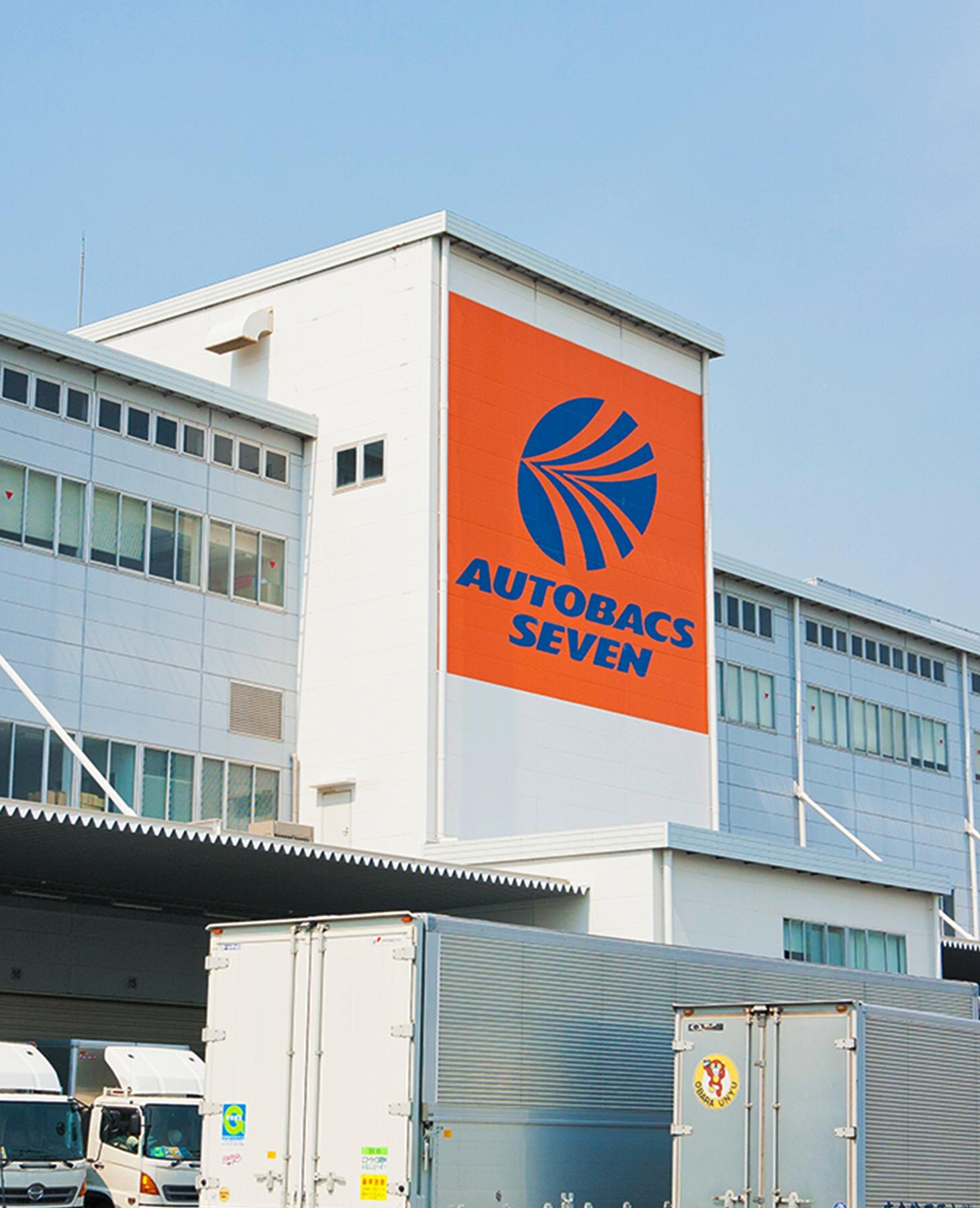
What’s Next? In 2012, we expanded the system to all of East Japan, and plan to introduce RFID technology to West Japan.
What’s Next?
In 2012, we expanded the system to all of East Japan, and plan to introduce RFID technology to West Japan.
After taking over one year including testing to introduce RFID, we launched the system in all regions in East Japan and are fully operational. April, the start of the fiscal year, was a new start. We will continue working on improving the distribution performance toward expanding the range of products. With a change in frequency by an amendment to the Radio Act, we decided to target West Japan for RFID system implementation in January of 2013.
* Source: Based on an interview conducted March, 2012. Data, organizational departments and personal names appear as they were at time of interview.
Products and Services Introduced
